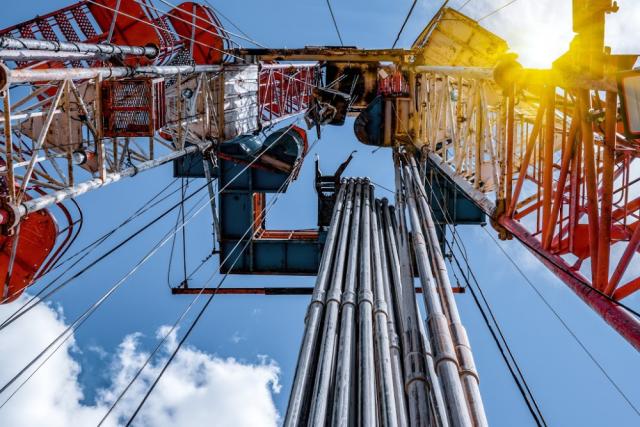
EOG Resources ended 2019 with net proved reserves of about 3,329 million barrels of oil equivalent (MMBoe), up 14% from a year earlier. (Source: Aleksei Zakirov/Shutterstock.com)
EOG Resources Inc. is looking to grow its inventory of premium drilling locations as it prepares to start testing at least six new oil and gas plays this year.
The Houston-based company already has identified about 10,500 premium undrilled locations, which equates to about 13 years of drilling at its current pace. Its premium-tailored strategy, rolled out in 2016, focuses on wells capable of earning at least 30% direct after-tax rate of return at $40 crude oil and $2.50 natural gas prices.
“We’re currently trying to add not only additional premium locations but really improve the quality of the locations,” Ezra Yacob, executive vice president of exploration and production for EOG, told analysts Feb. 28. He pointed out that the medium rate of return for the company’s current premium well inventory is 58% at $40 oil and $2.50 natural gas. “What we’re trying to do is increase that.”
For the past 12-18 months, he said, EOG has been leasing acreage across 10 prospects and the company aims to test about six of these prospects this year.
EOG said it added about 1,500 premium net wells in the Wolfcamp M and Third Bone Spring—“two new premium plays in Delaware Basin”—in 2019.
The focus on exploration comes alongside a persistent industrywide drive to keep costs down and improve capital efficiency with wells delivering strong production. It also comes amid continued pressure from investors on U.S. shale players to deliver higher returns and free cash flow, something EOG executives say its premium drilling does at low oil prices.
As the company sets out to test new plays, it is also working to move some of its existing inventory into the premium category. The company says about 5,000 locations—which Yacob said would add six years at the current pace—have conversion potential. The move-up would be accomplished by bringing down well costs, improving target selection, utilizing new completion technology and adding infrastructure to lower operating cost.
Lowering well costs, he noted, is the main driver in converting well locations. It’s something EOG has done “every year through not just reduced contract pricing but dominantly through our increased operational efficiency and applying innovative technologies and capturing different parts of the value chain.”
The company, which operates in several U.S. shale plays including the Permian Basin plus China and Trinidad & Tobago, reported Feb. 27 that its well costs—drilling, completion, wellsite facilities and flowback—fell by 7% in 2019. Cash operating costs—including LOE, transportation and G&A—dropped by 6% as capital efficiency improved by 15%. The latter is defined by EOG as the amount of capital needed to replace base decline, which averaged 32% for oil production last year, and add new production.
EOG ended the year with net proved reserves of about 3,329 million barrels of oil equivalent (MMBoe), up 14% from a year earlier. “Net proved reserve additions from all sources, excluding revisions due to price, replaced 253% of EOG’s 2019 production at a finding and development cost of $8.21 per barrel of oil equivalent,” the company said. “Revisions due to price decreased net proved reserves by 60 MMBoe and asset divestitures decreased net proved reserves by five MMBoe.”
For fourth-quarter 2019, EOG’s total production increased 11% to 78.2 million barrels.
This year, the company plans to spend between $6.3 billion and $6.7 billion on exploration and development. It intends to allocate less capital toward growing oil production than last year due to lower oil prices, but aims to grow such production by 10% to 14%.
EOG said it generated $1.9 billion in free cash flow last year, enabling it to raise the dividend by 31% for the second year in a row.
“At an oil price of less than $50 our disciplined capital plan of $6.5 billion supports growth in crude oil production at 12%, sets the company up for better returns in the future and comfortably funds the dividend,” EOG CEO Bill Thomas said before turning to exploration. “We are confident that our exploration efforts will add future high return growth potential to our already deep inventory.”
So, what does this mean for the possibility of bolt-on acquisitions?
“We really don’t plan on doing any significant bolt-on this year,” Thomas said, “maybe a few really small ones that are in our exploration plays. With the commodity prices, we’re going to be really careful with cash and make sure that we focus in on things that are going to generate super high returns.”
Recommended Reading
Seadrill Awarded $97.5 Million in Drillship Contracts
2024-01-30 - Seadrill will also resume management services for its West Auriga drillship earlier than anticipated.
TotalEnergies Starts Production at Akpo West Offshore Nigeria
2024-02-07 - Subsea tieback expected to add 14,000 bbl/d of condensate by mid-year, and up to 4 MMcm/d of gas by 2028.
Well Logging Could Get a Makeover
2024-02-27 - Aramco’s KASHF robot, expected to deploy in 2025, will be able to operate in both vertical and horizontal segments of wellbores.
Shell Brings Deepwater Rydberg Subsea Tieback Onstream
2024-02-23 - The two-well Gulf of Mexico development will send 16,000 boe/d at peak rates to the Appomattox production semisubmersible.
E&P Highlights: Feb. 26, 2024
2024-02-26 - Here’s a roundup of the latest E&P headlines, including interest in some projects changing hands and new contract awards.






